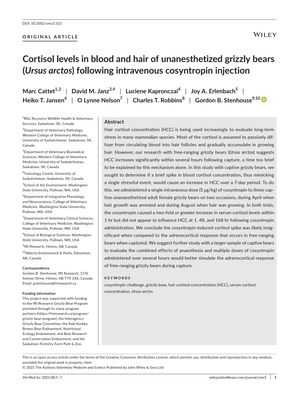Cortisol Levels in Blood and Hair of Unanesthetized Grizzly Bears (Ursus Arctos) Following Intravenous Cosyntropin Injection
May 2021
in “
Veterinary medicine and science
”

TLDR Injecting cosyntropin into grizzly bears increases blood cortisol but doesn't change hair cortisol levels.
The study investigated whether a rapid increase in blood cortisol levels would affect hair cortisol concentration (HCC) in grizzly bears, as a way to understand stress responses. Three adult female grizzly bears were given a single intravenous dose of cosyntropin (5 μg/kg) on two separate occasions, once when hair growth was dormant and once during active hair growth. The cosyntropin induced a significant increase in serum cortisol within 1 hour, but this did not translate to a change in HCC at 1, 48, or 168 hours after administration. The findings suggest that the cortisol spike from the cosyntropin injection does not significantly impact HCC, and the response may differ from that of free-ranging bears during capture. The study recommends further research with more bears and a protocol that better mimics the stress response of bears in the wild.


